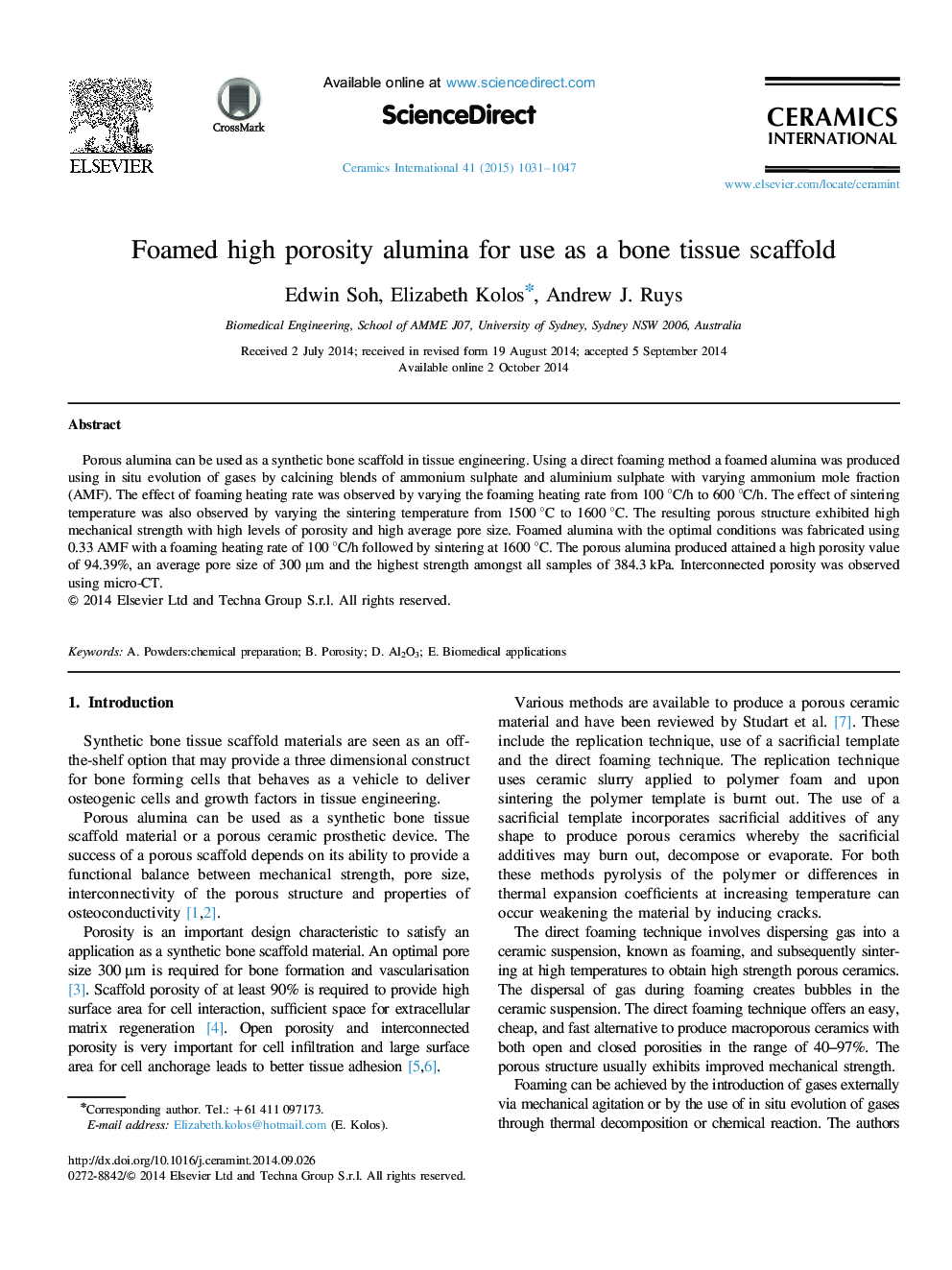| کد مقاله | کد نشریه | سال انتشار | مقاله انگلیسی | نسخه تمام متن |
|---|---|---|---|---|
| 1460797 | 989610 | 2015 | 17 صفحه PDF | دانلود رایگان |
Porous alumina can be used as a synthetic bone scaffold in tissue engineering. Using a direct foaming method a foamed alumina was produced using in situ evolution of gases by calcining blends of ammonium sulphate and aluminium sulphate with varying ammonium mole fraction (AMF). The effect of foaming heating rate was observed by varying the foaming heating rate from 100 °C/h to 600 °C/h. The effect of sintering temperature was also observed by varying the sintering temperature from 1500 °C to 1600 °C. The resulting porous structure exhibited high mechanical strength with high levels of porosity and high average pore size. Foamed alumina with the optimal conditions was fabricated using 0.33 AMF with a foaming heating rate of 100 °C/h followed by sintering at 1600 °C. The porous alumina produced attained a high porosity value of 94.39%, an average pore size of 300 µm and the highest strength amongst all samples of 384.3 kPa. Interconnected porosity was observed using micro-CT.
Journal: Ceramics International - Volume 41, Issue 1, Part B, January 2015, Pages 1031–1047
